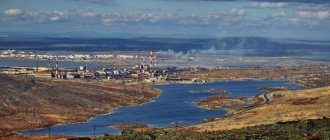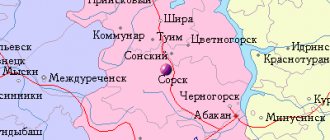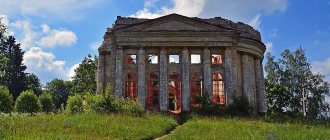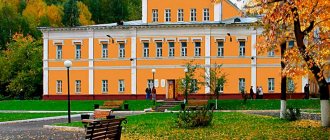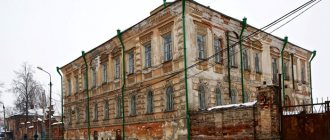Yuryuzan-News
general information
Trekhgorny is a closed city in Russia, in the Chelyabinsk region. In Soviet times, the city was secret and was called Zlatoust-20 (Zlatoust-36). The city is located on the Yuryuzan River.
The population of the Trekhgorny urban district is about 33.0 thousand people. By age group, the structure of the population is as follows: below working age – 16.4%, working age – over 62.2%, over working age – about 21.4%.
In accordance with the Charter of the Trekhgorny urban district adopted in 2005, local self-government is exercised on its territory. The head of the city, Evgeny Leonidovich Sychev. Executive and administrative functions are carried out by the administration of Trekhgorny, headed by Vladimir Nikolaevich Belyakov.
Historical reference
The birth of the city in the depths of the mountainous Ural taiga, away from prying eyes, is associated with the government’s decision to build here one of the secret facilities of the then new nuclear industry.
On January 24, 1952, the Council of Ministers of the USSR issued Resolution No. 342-135 ss/op “On the construction of plant No. 933” - the second backup of plant No. 551 for the serial production of nuclear weapons.
In accordance with the Resolution of the Council of Ministers of the USSR, the Minister of Internal Affairs of the USSR Kruglov, by order No. 00223 of 02.02.1952, ordered: the construction of the plant should be entrusted to the construction department No. 247 of the Glavpromstroy of the Ministry of Internal Affairs of the USSR; the head of construction department No. 247, Colonel P. P. Chestnykh, to send an operational group to the construction site to select quarries for local building materials and an area for the construction of a special contingent camp.
The site for the construction of the plant and the workers' settlement attached to it was chosen 4 km south of the city of Yuryuzan, Chelyabinsk region; an area of 15,012 hectares was transferred from the state fund for construction under an act.
The first landing of 750 construction soldiers under the command of Lieutenant Colonel Chernomorchenko arrived from Chelyabinsk-40 on April 9, 1952 at the Krasnaya Gorka railway station in the village of Vasilovka.
The premises of two horse parks were vacated for the accommodation of soldiers, which, after repair, cleaning and painting, became the first barracks for soldiers. The officers were placed in private apartments.
On May 7, 1952, an engineer, Colonel Konstantin Arsenievich Volodin, director of the future plant, arrived at the site.
First acting The head of the construction organization, mailbox 202, by order from May 4, 1952, was Captain Pozdnyakov V.A., but already in June 1952 he was replaced by Lieutenant Colonel Musinov V.A.
The initial task of the builders was to build the first stage of the plant, including the Dalny village, so that in 1954 - 1955 the plant would begin producing special products. In this regard, the regime requirements were very serious. People arriving at the site were subject to background checks. Only a narrow circle of managers knew what the plant would produce.
Construction of the facility began with the construction of track roads from Vasilovka to construction sites - to the concrete plant, to the residential area, to the Dalniy village. Until the end of 1952, the street was built up with barracks. Builders, here in the barracks there was a store, a bathhouse, a hairdresser, a kindergarten, and a political department. A club named after them was built. “35th Anniversary of October Revolution” and the Stroitel stadium. The work was carried out both by construction soldiers and prisoners. In 1953, the laying of foundations for buildings in the industrial zone began, and wooden, cobblestone, 2-story houses were erected in residential areas. In 1954, the first stone houses appeared.
The pace of construction, the volume of construction and installation work performed and the number of builders increased to the maximum level by 1955, and by August 1955 the builders completed the task - the plant began producing the first atomic bombs with the unofficial name “Tatyana”.
In total, over the history of its work, the plant has mastered the production of dozens of new products, hundreds of their components and types of operating equipment. All products have successfully passed special tests, including control flight tests at the training grounds of the Ministry of Defense.
The staff of the Instrument-Making Plant was awarded the Order of Lenin in 1970, and in 1967 and 1973. he was awarded the Red Banners and left for eternal storage, and in 1977 the team was awarded the title “Enterprise of High Culture.” All this clearly demonstrates the high organization of production, conscientious and highly qualified work of the factory team.
In the mid-80s, the plant began conversion—the transition to producing civilian products. Priority areas have emerged: production of consumer goods; devices for monitoring radiation and nuclear safety for nuclear power plants, equipment for the agricultural sector and medical equipment; introduction of new technological processes for coating products and objects; production of works for the oil industry.
Today, the city-forming enterprise, the Instrument-Making Plant, is one of the leading enterprises of the Russian Federal Atomic Energy Agency. The full range of technological capabilities ensuring the fulfillment of defense and civil orders allows us to maintain this status for many years.
In 1953, the first school (now Municipal Educational Institution “Secondary School No. 106”) and the first preschool institution opened in Trekhgorny; in 1954 - evening ShRM (school for working youth) No. 107. In 1956, the city department of public education was organized (the first head was Antonina Stepanovna Zolotareva), in 1962 - the department of preschool institutions (at the Instrument-Making Plant). Currently, the city has 14 preschool institutions, five secondary schools, four institutions of additional education, one specialized (correctional) municipal educational institution - boarding school No. 111, professional lyceum No. 125, a branch of the Zlatoust Polytechnic College, Trekhgorny Polytechnic Institute - branch of MEPhI, representative office of SUSU.
Trekhgorny's first medical institution was a hospital, opened in 1952. His boss was M. A. Morozova. In 1953, by order of the Ministry of Health of the 3rd Main Directorate, medical unit No. 72 was organized (chief A.I. Morozov), located in a barracks-type building. The clinic was attended by 7 specialist doctors; There was an emergency medical service. In 1954, a paramedic station and a center for State Sanitary and Epidemiological Supervision began operating. In 1956, a city clinic (for 250 visits per shift) and a 3-story hospital (for 150 beds) were put into operation, in which there were therapeutic, surgical, gynecological, maternity, children's departments, a pharmacy, and an emergency medical service. Later, a maternity hospital (1966), a children's clinic and hospital with 60 beds (1967), a sanatorium with 100 beds (1970), the main building of the sanitary-epidemiological station (1973), and a pharmacy (1981) were built. ), 7-story surgical building (1981).
By the end of the 1950s, Trekhgorny had a builders' club (housed in a wooden barracks), a cinema, and a trade union library. In 1967, the cultural department of Trekhgorny was formed, the first head was V.P. Belov. Currently, the Department of Culture administers two public libraries (the central city and the central city children's library), the Icarus Palace of Culture, the Utes cinema, a historical and art museum, and a Park of Culture and Rest. The Central City Library has been operating since 1956 (in its current status - since 1993).
The central city children's library was organized in 1957. The Ikar Palace of Culture opened in 1971. The History and Art Museum was created on the basis of the city museum. In 1956, a Children's Music School was opened in Trekhgorny (originally located in a barracks) with 3 departments: piano, orchestral and folk instruments. In 1998, the institution was awarded the status of a Children's Art School (director - Honored Worker of Culture of the Russian Federation S.Ya. Zabrodina).
Simultaneously with the construction of the plant and the village, the physical culture movement developed. Initially, in the construction departments, and from 1954 in the plant management, teams and sections were created for team sports (volleyball, basketball, football), as well as skiing, chess, track and field athletics, and boxing. Due to the lack of equipped sports grounds, training and competitions took place in open areas near barracks and dormitories. In 1954, the Stroitel stadium was built (later renamed Khimik). At the origins of the physical education movement in Trekhgorny were: I. N. Antonenko, M. Baranov, V. V. Belousov, A. K. Deryushev, V. M. Dyachenko, V. D. Kozlov, V. N. Lopatkin, A. M. Melnikov and others. In December 1954, a meeting of the city physical culture activists was held, where the council of the physical education team was elected (the first chairman was Deryushev). In 1958, the city sports council was founded. With the support of GorONO, children's and youth sports developed in Trekhgorny; mass city sporting events were held; Much attention was paid to the participation of residents in regional, republican, all-Union, and international competitions, and the development of sports infrastructure. In 1955, the first track and field relay race took place. In the 1960-80s, events for passing GTO standards and competitions in technical sports were regularly held. The sports complex of the Trud stadium (1960-61), the Sports Palace with a swimming pool (1967), and the sports complex for youth sports school No. 1 (1979) with specialized halls for athletics, acrobatics, a football field, and a running track were put into operation . Today, the sports infrastructure of ZATO includes three Olympic reserve schools for children and youth (judo, boxing, athletics and acrobatics), as well as sports organizations and clubs.
At the end of the 1990s, in one of the residential buildings in Trekhgorny, at the request of residents, an Orthodox church was opened in honor of the Intercession of the Blessed Virgin Mary. At the same time, the collection of donations for the construction of the temple began. On October 17, 1999, at the site of construction of the temple building, the ceremony of laying the first stone with the relics of St. Mitrofan took place. By 2004, dome ceilings were installed and interior decoration of the premises began. On September 29, 2005, the temple opened. The consecration ceremony was attended by Metropolitan Job of Chelyabinsk and Zlatoust and rector-archpriest Father Pavel.
The municipal formation "City of Trekhgorny" has been an urban district since 2005, after the entry into force of Federal Law No. 131.
Today, blocks of modern residential buildings have risen higher and higher into the mountain - to where the barracks of the pioneers once stood.
Important historical dates
April 9, 1952 in the village of Vasilovka on the railway. The first echelon of construction workers arrived at the Krasnaya Gorka station.
On March 17, 1954, a workers' settlement was created at post office box 17 (union plant No. 933).
On August 1, 1955, the plant began fulfilling the first government order. In August of the same year, two tactical aviation atomic bombs RDS-4 “Tatyana” were released
On October 28, 1955, the workers' village was transformed into the city of district subordination of Zlatoust-20.
On January 1, 1967, Zlatoust-20 was renamed Zlatoust-36.
On October 29, 1993, Zlatoust-36 was renamed Trekhgorny and included in the administrative-territorial division of the Chelyabinsk region.
Economy
There are 635 organizations registered in the city, of which about 200 are classified as large and medium-sized. The main enterprise of the city is the Instrument-Making Plant (engaged in the production of instruments for nuclear power plants). Not far from Trekhgorny lies the border of the Federal State Institution “South Ural State Nature Reserve”, located on the territory of the Chelyabinsk region and the Republic of Bashkortostan, with unique flora and fauna.
Transport
From the bus station there are flights to Chelyabinsk, Ufa (Sim, Asha), Zlatoust (Bakal, Satka), Katav-Ivanovsk, Yuryuzan.
Culture
The cultural environment of a closed city is an extraordinary phenomenon. Trekhgorny (Zlatoust-36) was built far outside the settlements; accordingly, cultural life was formed artificially, “from scratch” by people who came from the central regions of the country, which have rich cultural traditions.
Many traditions, merging together in the process of close interaction, formed an innovation, a special cultural environment. Construction of the city began in 1952, and in 1958, cultural institutions already included a temporary wooden barracks-type builders club, a Utes cinema, a radio center, a trade union library and a music school.
Today Culture is a significant component of the social sphere of the Trekhgorny urban district. The policy implemented in the field of culture is aimed at strengthening national-territorial traditions, maintaining the cultural activity of the population, creating conditions for organizing leisure time and providing residents with the services of cultural institutions.
Documents for the article:
Based on materials by V. F. Galiev, N. I. Golendukhin, L. A. Zakora, Z. I. Kashirina, N. M. Kondratyeva, A. V. Speransky.
Lit.: A Word about Instrument-Making. 1955-1995 / Comp. L.P. Shchedrin. Trekhgorny, 1995; Native Trekhgorye: Ist.-lit. almanac / Comp. L. G. Nikolai. Trekhgorny, 1996; Nuclear shield of the Motherland. Instrument-making plant Trekhgorny / Comp. L.P. Shchedrin. Ch., 2000; Trekhgorny: History. Journalism. Literature / Comp. L. G. Nikolai. Ch., 2002.
Population[ | ]
| Population | ||||||
| 1996[6] | 2000[6] | 2001[6] | 2002[7] | 2003[6] | 2005[6] | 2006[6] |
| 30 800 | →30 800 | ↗31 000 | ↗34 290 | ↗34 300 | ↗34 500 | ↘34 400 |
| 2007[6] | 2008[6] | 2009[8] | 2010[9] | 2011[6] | 2012[10] | 2013[11] |
| ↗34 700 | ↘34 600 | ↘34 451 | ↘33 670 | ↗33 700 | ↘33 262 | ↘33 002 |
| 2014[12] | 2015[13] | 2016[14] | 2017[15] | 2018[16] | 2019[17] | 2020[2] |
| ↘32 789 | ↘32 540 | ↘32 521 | ↘32 355 | ↗32 715 | ↘32 613 | ↗32 665 |
As of January 1, 2021, in terms of population, the city was in 471st place out of 1116[18]cities of the Russian Federation[19].
The population structure by age group is as follows:
- younger than working age - 16.4%,
- working age - over 62.2%,
- over working age - about 21.4%.
Education[ | ]
- MKOU "Secondary school No. 106"
- MBOU "Secondary school No. 108"
- MBOU "Secondary school No. 109"
- MBOU "Secondary school No. 110"
- MBOU "Secondary school No. 112"
- MKS(K)OU for students, pupils with disabilities “Special (correctional) general education boarding school No. 111 VIII type”
- MV(S)OU "Education Center"
- Trekhgorny Technological Institute - branch of the Federal State Autonomous Educational Institution of Higher Education "National Research Nuclear University "MEPhI""
Closed cities of Russia
It is worth saying that, with the exception of the obvious, these conditions were only to the benefit of the residents. Thus, the newly minted “cogs” of a secret system on a state scale were provided with various benefits - the availability of scarce goods in stores, an increased level of medicine and education, decent salaries.
The first closed cities appeared during the period of work on the creation of nuclear weapons in 1946-1953. Until the collapse of the USSR , when lists of closed settlements were published, the cities on this list were strictly classified - no one except the residents themselves knew about their existence. They were not marked on maps, they did not have names (they were named after a nearby settlement with a numerical prefix - Sverdlovsk-44 , Krasnoyarsk-45 , etc.), and the residents had a “fake” registration and a document on non-disclosure of their place residence.
After the USSR collapsed and the lists of closed cities were declassified, many of the cities were deprived of their secret status. Many, but not all. Until now, throughout the Urals and Russia there are cities that may be marked on maps, but it is still difficult for “outsiders” to get into them.
Today there are 9 closed cities in the Urals , with the vast majority subordinate to Rosatom .
Economics[ | ]
There are 635 organizations registered in the city, of which about 200 are classified as large and medium-sized.
The main enterprise of the city is the Instrument-Making Plant (engaged in the production of nuclear weapons).
Not far from Trekhgorny lies the border of the South Ural Nature Reserve, which has a unique flora and fauna, which is located on the territory of the Chelyabinsk region and Bashkortostan.
Infrastructure[ | ]
Outside the city limits there are:
SNT, Kuturskoye, Mesedinskoye and Yuryuzanskoye forest districts of the Yuryuzanskoye integrated timber industry enterprise, Bakalskoye forest district of the Satkinskoye integrated timber industry enterprise, the Katav-Ivanovsk - Vyazovaya railway.
Notes[ | ]
- Chairman of the Assembly of Deputies of the city of Trekhgorny (unspecified)
(inaccessible link). Date accessed: June 23, 2021. Archived July 8, 2021. - ↑ 123
Population of the Russian Federation by municipalities as of January 1, 2021 (Russian). Date accessed: October 17, 2021. Archived October 17, 2021. - Relation: Trekhgorny urban district (1517669) | OpenStreetMap
- E. Korchagin. Creation of the nuclear shield of the Fatherland
- About the company - Uralvoenkon-SN (Trekhgorny) (unspecified)
. https://xn--80aejucobedm6a.xn--p1ai.+Date of access: October 29, 2018. - ↑ 123456789
People's encyclopedia "My City". Trekhgorny - All-Russian population census 2002. Volume. 1, table 4. Population of Russia, federal districts, constituent entities of the Russian Federation, districts, urban settlements, rural settlements - regional centers and rural settlements with a population of 3 thousand or more (unspecified)
. Archived from the original on February 3, 2012. - The size of the permanent population of the Russian Federation by cities, urban-type settlements and regions as of January 1, 2009 (unspecified)
. Retrieved January 2, 2014. Archived January 2, 2014. - Volumes of the official publication of the results of the 2010 All-Russian Population Census for the Chelyabinsk Region. Volume 1. “Number and distribution of the population of the Chelyabinsk region.” Table 11 (undefined)
. Chelyabinskstat. Access date: February 13, 2014. Archived February 13, 2014. - Population of the Russian Federation by municipalities. Table 35. Estimated resident population as of January 1, 2012 (unspecified)
. Retrieved May 31, 2014. Archived May 31, 2014. - Population of the Russian Federation by municipalities as of January 1, 2013. - M.: Federal State Statistics Service Rosstat, 2013. - 528 p. (Table 33. Population of urban districts, municipal districts, urban and rural settlements, urban settlements, rural settlements) (undefined)
. Retrieved November 16, 2013. Archived November 16, 2013. - Table 33. Population of the Russian Federation by municipalities as of January 1, 2014 (unspecified)
. Access date: August 2, 2014. Archived August 2, 2014. - Population of the Russian Federation by municipalities as of January 1, 2015 (unspecified)
. Access date: August 6, 2015. Archived August 6, 2015. - Population of the Russian Federation by municipalities as of January 1, 2021 (Russian) (October 5, 2018). Date accessed: May 15, 2021. Archived May 8, 2021.
- Population of the Russian Federation by municipalities as of January 1, 2021 (Russian) (July 31, 2017). Retrieved July 31, 2021. Archived July 31, 2021.
- Population of the Russian Federation by municipalities as of January 1, 2021 (Russian). Retrieved July 25, 2018. Archived July 26, 2021.
- Population of the Russian Federation by municipalities as of January 1, 2021 (Russian). Date accessed: July 31, 2019. Archived May 2, 2021.
- taking into account the cities of Crimea
- https://rosstat.gov.ru/storage/mediabank/bul_Chislen_nasel_MO-01-01-2021.rar Population of the Russian Federation by municipalities as of January 1, 2021 (1.85 Mb, 07/30/2021)
